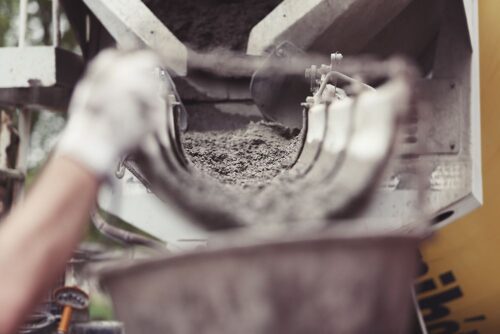METHODS FOR MIXING OF CONCRETE & PRECAUTIONS
Concrete is a widely used construction material made from a mixture of cement, water, and aggregates such as sand and gravel. Mixing of concrete is a crucial step in the construction process, as it determines the quality and strength of the final product. In this article, we will discuss the methods for mixing of concrete and the precautions that should be taken during the process.
Methods for Mixing of Concrete:
- Hand Mixing: Hand mixing of concrete is the oldest and most basic method. It is suitable for small-scale construction projects, where the volume of concrete required is relatively low. In this method, the materials are mixed manually by workers using shovels, hoes, or other hand tools. However, hand mixing is a time-consuming process and can result in inconsistent mixing, leading to poor quality concrete.
- Machine Mixing: Machine mixing is a more efficient method of mixing concrete, which is suitable for medium to large-scale construction projects. In this method, a machine such as a concrete mixer is used to mix the materials. The mixer can be either stationary or mobile, and it has a rotating drum that mixes the materials thoroughly. Machine mixing ensures consistent mixing of the materials, resulting in high-quality concrete.
- Ready-Mix Concrete: Ready-mix concrete is a type of concrete that is produced in a factory and delivered to the construction site in a ready-to-use form. It is a convenient and time-saving method of mixing concrete, as the concrete is already mixed and prepared. Ready-mix concrete is commonly used in large-scale construction projects, where a large volume of concrete is required.
Precautions for Mixing of Concrete:
- Proper Proportions: The proportions of the materials used in the mix should be accurate, as any variation can affect the quality and strength of the final product. It is essential to follow the specified mix design and use accurate measuring equipment to ensure the correct proportions of materials.
- Mixing Time: The mixing time should be adequate to ensure proper mixing of the materials. Under-mixing can result in poor quality concrete, while over-mixing can cause the materials to separate and reduce the strength of the final product. The mixing time can vary depending on the type of mixer used and the specific mix design.
- Water-Cement Ratio: The water-cement ratio is a critical factor that determines the strength and durability of the concrete. The ratio should be within the specified range, as an excess of water can weaken the concrete, while a shortage of water can result in a dry mix that is difficult to work with.
- Mixing Environment: The mixing environment should be clean and free of any contaminants that can affect the quality of the concrete. The mixing equipment should be cleaned and maintained regularly to ensure proper functioning.
- Quality Control: Quality control measures should be in place to ensure that the concrete meets the required specifications. This can include testing the strength, slump, and air content of the concrete at various stages of the construction process.
In conclusion, mixing of concrete is a crucial step in the construction process, and the quality and strength of the final product depend on the method of mixing and the precautions taken during the process. Proper proportions, adequate mixing time, the water-cement ratio, a clean mixing environment, and quality control measures are essential to ensure high-quality concrete.


